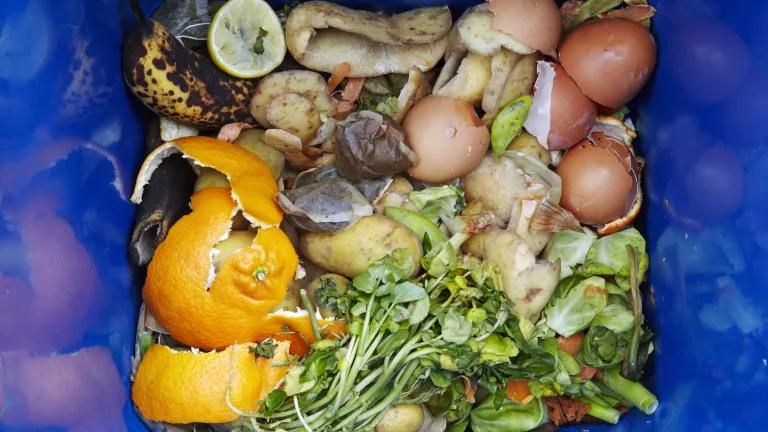Today is World Environment Day, and this year, the United Nations Environment Programme (UNEP) chose to focus the day around food waste. Why? Because wasting food has a huge impact on our environment. First of all, it takes an enormous amount of resources to produce food. In the U.S., for instance, we dedicate over half our land area and 80 percent of our water to growing food. No matter how organically or sustainably we grow that food, if we don’t eat it, all of the water, land, and fertilizer used were for naught. For instance, throwing out just one hamburger is equivalent in water use to taking a 90 minute shower!
This costs us, too. The average American throws away between $100–$175 each month in the form of about 20 pounds of food. Yup, the lettuce that went bad, the leftovers you never got around to eating, and the science experiment in the back of the fridge you’re hoping your husband will clean up one day—they all add up to 15-25 percent of the food you buy going uneaten.
For World Environment Day, UNEP invites each of us to make a pledge to do one thing differently. Yesterday, the USDA made its own pledge to do more to reduce food waste across the U.S. What will yours be? Here are a few ideas of steps you can take, maybe even pledge to take, to reduce your own food waste footprint.
1. Shop wisely—Plan meals, use shopping lists, buy from bulk bins, and avoid impulse buys. Don’t succumb to marketing tricks that lead you to buy more food than you need, particularly for perishable items. Though these may be less expensive per ounce, they can be more expensive overall if much of that food is discarded.
2. Buy funny fruit—Many fruits and vegetables are thrown out because their size, shape, or color are not “right”. Buying these perfectly good funny fruit, at the farmer’s market or elsewhere, utilizes food that might otherwise go to waste.
3. Learn when food goes bad—“Sell-by” and “use-by” dates are not federally regulated and do not indicate safety, except on certain baby foods. Rather, they are manufacturer suggestions for peak quality. Most foods can be safely consumed well after their use-by dates. Check out www.StillTasty.com for more information on how to store your food and know when it’s bad.
4. Mine your fridge—Websites such as http://www.lovefoodhatewaste.comcan help you get creative with recipes to use up anything that might go bad soon.
5. Use your freezer—Frozen foods remain safe indefinitely. Freeze fresh produce and leftovers if you won’t have the chance to eat them before they go bad.
6. Request smaller portions—Restaurants will often provide half-portions upon request at reduced prices.
7. Eat Leftovers—Ask your restaurant to pack up your extras so you can eat them later. Freeze them if you don't want to eat immediately. Only about half of Americans take leftovers home from restaurants.
8. Compost—composting food scraps can reduce their climate impact while also recycling their nutrients. Food makes up almost 13 percent of the U.S. waste stream, but a much higher percent of landfill-caused methane.
9. Donate—non-perishable and unspoiled perishable food can be donated to local food banks, soup kitchens, pantries, and shelters. Local and national programs frequently offer free pick-up and provide reusable containers to donors.
10. And most of all, love your food! The more we appreciate all it takes to get food to our tables, the more we will naturally take steps to be sure it all goes to good use. Happy World Environment Day!



